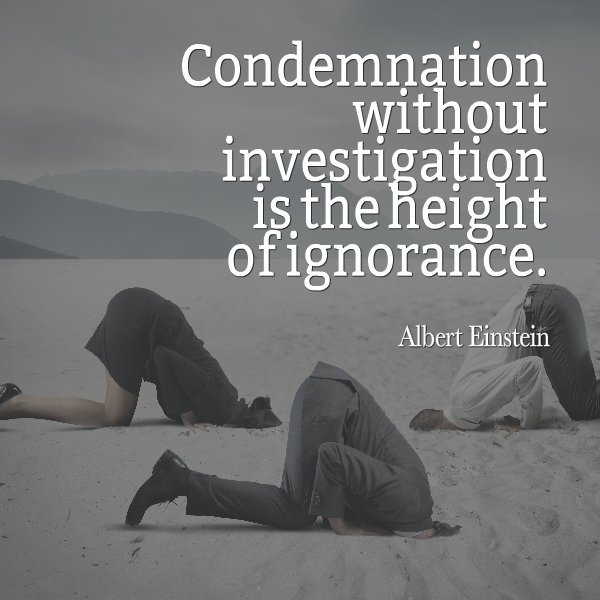Mental Illness: Dark Force Influences?
 by Jerry Marzinsky B.A. M.ED.
by Jerry Marzinsky B.A. M.ED.
When spirits begin to speak with man, he must beware lest he believe them in anything; for they say almost anything; things are fabricated by them, and they lie; for if they were permitted to relate what heaven is, and how things are in the heavens, they would tell so many lies, and indeed with a solemn affirmation, that man would be astonished.” ~ Emmanuel Swedenborg
Introduction
Since the dawn of civilization, a strange and malevolent affliction has stalked humanity; its etiology and elusive mystery.
Like a viper that strikes in the night, its approach is undetectable, its venom invisible, its presence evident only by the long trail of human carnage strewn in its wake.
It is an illness so horrific that one out of ten of its victims will kill themselves to escape it, while the remaining will die three times earlier than the rest of us. Its incidence is increasing.
At present, it is destroying about twenty-three million people a year world-wide.
The World Health Organization has declared it to be among the world’s top ten health problems. Yet, research funding is minuscule. The Wall Street Journal reported the NIMH responded to this deficiency by manipulating the statistics: “With a change of the National Institute of Mental Health website in 2017, two million people with this illness simply disappeared.”
This disease actually speaks to its victims as it slowly kills them. For countless decades doctors have stubbornly refused to listen to patients who report this. Such might be understandable if the tormentor’s tidings were unintelligible, but in many instances, this is not the case. Hundreds of patients described an unrelenting barrage of sinister and malicious messages delivered in complete and coherent sentences.
These relentless assaults, coupled with the refusal of medical providers and others to believe what patients are experiencing, leaves these individuals feeling trapped, alone, misunderstood and desperate. With the realization that no one comprehends what they are undergoing, their anguish mounts.
Desperate for any means to escape their intense suffering, four out of every ten will attempt suicide. One out of every four will succeed.
Added to the weirdness surrounding this affliction, we find another freakish correlation. The Journal of the American Medical Association published a study that reveals a suicide rate 5.9 times higher than the general population for doctors who specialize in the treatment of this disorder.
One of the most frustrating aspects of this scourge is its abject refusal to loosen its grip on its victims. Descriptions of this illness date back to 2000 B.C., across several cultures, the oldest being the Egyptian Ebbers Papyrus.
Since that time, medical science has searched in vain for a physical cure for this malevolent mental illness known as paranoid schizophrenia, the most prevalent and devastating of psychotic disorders.
In 1908 Swiss Psychiatrist, Eugene Bleuler gave this disability the name it carries today: schizophrenia. It derived its designation from the ancient Greek root “skhizizein phren”, which translates to “split mind”. The label was to become one of the first of an ever-growing list of psychiatric diagnoses in the DSM (Diagnostic and Statistical Manual of Mental Disorders) – it’s a work of fiction to which we are all subjected – made up by psychiatrists without any solid scientific backing.
Paranoid schizophrenia was based on the assumption that the hallucinations, or the voices, these patients experienced resulted from a splitting of the individual’s previously unified mind. The general population had other names for this illness, including lunacy, insanity, and madness.
Kraepelin’s unfounded theory that schizophrenia and other mental illnesses are a biological disease of the brain, fostered protocols that failed miserably to discover a cause, cure, or an effective treatment for schizophrenia that didn’t damage the patient. Bleuler’s ideas about the value of these patients’ lives are explicit and alarming: “Most of our worst restraining measures would be unnecessary if we were not duty bound to preserve the patients’ lives, which, for them, as well as for others, are only of negative value. . . Even if a few more killed themselves – does this reason justify the fact that we torture hundreds of patients and aggravate their disease. At the present time we psychiatrists are burdened with the tragic responsibility of obeying the cruel views of society: But it is our responsibility to do our utmost to bring about a change in these views in the future.”
Psychiatry doesn’t know the cause of paranoid schizophrenia. They don’t understand what is happening to schizophrenics and are loath to admit it. Whatever the cause, they’ve been unable to find it over the last few thousand years. Despite scores of repeated physical treatment failures they continue to believe there is a physical cause. The mere mention of successful alternative treatments that have cured schizophrenia sends most psychiatrists and academics into a frenzy.
Such was the case of Dr. M. Kemal Irmak – High Council of Science, Gulhane Military Medical Academy, Turkey. On December 27, 2012, Dr. Irmak wrote, “Schizophrenia or Possession”. He had witnessed a shaman heal schizophrenics. His article suggested an investigation was warranted. Mainstream academic and medical establishments attacked the professor like a pack of rabid dogs. They directed their wrath not only at Dr. Irmak but also the Journal that dared to publish his article. In one case, a disputant suggested that Irmak was driving the profession into the Stone Age. That schizophrenics were being cured was of no consequence. One of their own dared to think outside their box and this was treasonous.
 Challenging The Physical Cause of Schizophrenia
Challenging The Physical Cause of Schizophrenia
Our purpose [here] is to highlight the fact that since its inception, medical science has found no cure for schizophrenia, and to challenge Hippocrates’ three-thousand-year-old proclamation that all illness has a biological cause. While this theory has resulted in remarkable successes in pathology, when applied to mental illness, it quickly unravels and becomes dysfunctional.
In the realm of physical medicine, a multitude of lab tests exists to substantiate a specific illness. With mental illness, we move into a realm of intangibles and assumptions, where essential questions remain unanswered, questions such as “where do the dark and dangerous thoughts that plague schizophrenics and the rest of us come from?”
The Greek word psyche means “the soul, mind, spirit, or invisible animating entity which occupies the physical body.” The disciplines of psychology and psychiatry have adopted the word in name only. After the completion of four years of undergraduate study in psychology and another four years of graduate work in psychology and counseling, not once was the soul or spirit ever mentioned. These educational programs were as spiritually dry as the Sahara Desert.
One of the reasons I went into the study of psychology was to find out what thoughts were, and where they came from After two years in what was supposed to be one of the best Ph.D. psychology programs in the country, this subject was never brought up, and I grew impatient. At the end of a lecture on how to cheat with statistics, I asked the head of the psychology department, an ex-preacher no less, where thoughts came from. He stared at me blankly from the lectern as if I were a Martian who had just had fallen at his feet. It was clear he’d never thought about it. From the look on his face I could tell that the door was slammed shut on the topic.
Perhaps the most tragic deficiency of both psychology and psychiatry is their abject failure to research the most critical of schizophrenic symptoms: the voices these individuals experience. Since neither they nor others can hear these voices, they proclaim them to be auditory hallucinations, a groundless ruling. The dictionary definition of a hallucination is “an experience involving the apparent perception of something not present.” Given the label they have chosen what medical professional would risk their reputation studying something officially deemed imaginary? With this untested manifesto, research into perhaps the most significant information leading to the cause of this devastating affliction is stymied. What if the voices are not hallucinations?
We all experience a voice in our head. The difference between this voice and those that schizophrenics hear is in frequency, intensity, maliciousness, and degree of control they have over thought processes and consequent behavior. Although the thought content of schizophrenics is at the far end of the normal curve, they are still a part of the human condition, and not as different from the rest of us as it might seem. In the course of our daily lives, we’ve all experienced “psychotic symptomology”. For example, a wretched or shameful thought suddenly barges into our mind. It comes out of nowhere and makes us shudder. Startled, we wonder how we could even think such a thought and silently feel embarrassment, shame, and guilt. Although such thoughts are not something the vast majority of us experience frequently or would act upon or even entertain, we assume that these thoughts belong to us. We don’t wonder where such a thought might have come from or why it appeared. Examples are common: A nurse was driving her car when suddenly the thought to turn into oncoming traffic popped into her mind. An individual on the third floor of a parking garage was staring over the railing when the thought to jump appeared. A preacher standing at the edge of the Grand Canyon suddenly has a thought to jump.
Such is the case with many mass shootings. The assumption is that the shooter is mentally ill, yet we do not investigate the thought process that led to committing the crime. Instead we mistakenly divert the blame to guns, dumb inanimate hunks of metal incapable of operating autonomously. If we asked the shooters what was going through their minds prior to the commission of their crime, many would say their voices commanded them to do this.
Juries, psychiatrists and law enforcement have heard numerous accounts of psychotic criminals attributing their behavior to voices speaking to them. Instead of researching the origin of such disordered thoughts and developing programs to address them, the defendant is diagnosed as psychotic and locked up in a hellish prison environment, making them worse, and then released back into society.
Schizophrenics have been trying to tell us for centuries that these discarnate voices are controlling their thought stream, plotting against them, and triggering their violent, abnormal behavior. Schizophrenics world-wide are all saying these same things. No one is listening.
The ignominious transgressions don’t stop there. As if piling one erroneous assumption atop another validates their position, psychiatry cuts off the only valid and available source of information about these voices. For hundreds, if not thousands, of years schizophrenics have told physicians that their voices are real. These patients take a substantial risk in doing so. They quickly find their words fall on deaf ears and are summarily dismissed. Far from listening to what their patients may have to teach them about this critically important symptom, psychiatrists dismiss these reports as the ravings of lunatics. After all, what could a lunatic possibly have to teach doctors who have finished years of extensive psychiatric programming via the Ivory Tower? Upon graduation psychiatrists are deemed specialists in the treatment of mental illness and brainwashed into thinking they know all there is to know about schizophrenia.
Not only do they not listen to what their patients have to say about their voices, they dictate to the sufferer what they should believe about their condition. With all the power of a medical degree, these doctors reject their patient’s reports as worthless, while providing a hopeless diagnosis that proclaims the patient is psychotic, their brain is broken, caused by a non-existent chemical imbalance, the voices they hear are unreal hallucinations, there is no cure, and the only treatment is a daily dose of mind-numbing toxic medication to be taken for the rest of their lives.
Patients quickly discover that although these drugs often weaken their voices, they seldom get rid of them. Unable to tolerate the nasty side effects or manage their lives without these drugs, many turn to self-medicating with street drugs, which dramatically worsens their condition.
If Psychiatry were to objectively study the voices schizophrenics hear, another world would emerge, one so strange as to be incomprehensible. They would discover that the voices are not meaningless word salad. Unlike hallucinations, which are random in nature, the voices communicate in complete and coherent sentences. They also run consistently negative patterns. Psychiatrists might wonder what force holds the voices to such an unyielding course. Finally, they would notice that after the voice attack, patients are always left energetically drained. These findings may be unpalatable to psychiatry, but denying these truths doesn’t change the facts.
Clinical Therapy
When patients encountered a mental health professional at the state hospital who remotely understood their experience, they reacted like a person stranded in a foreign country, finally finding someone with whom they could speak. I was aware that years before they met me, most had been brutalized, ignored, or marginalized by the mental health system. By the time they met me, many had already been drugged senseless by psychiatrists for bringing up the topic of hearing voices and some had been locked up.
Before they would teach me anything about their voices, they had to overcome their fear of talking about them. It took years, but eventually, I collected enough scraps of information to piece together a template of how the voices behaved. I presented new findings to different patients asking them if the information was accurate.
When they sensed I was earnest and willing to consider that their voices might not be hallucinations, they began to teach me more. I realized that whatever the voices were, they were persistently horrible, negative, and abusive. They had nothing positive to say about me, the patient, or anyone else.
I found myself enrolled in “The University of Florid Psychosis” funded by the state of Georgia, where some of my finest professors were my psychotic patients who were considered flaming lunatics by the establishment. Year after year, I advanced in my studies and finally got to the point where I could sit down with a new schizophrenic patient and give them more detailed information about their voices, consistent with their experience, and often much more than they knew.
As I worked with each new patient, together, we learned more. As my database grew, I found myself operating in two different realities that weren’t communicating with each other. With a foot in each world, I felt almost as split, conflicted, and isolated as my patients. I was discovering exciting and frightening things in the world of the insane, though I dared not speak about these to anyone in the world of the same for fear of being labeled a lunatic myself.
I continued developing a cognitive map of the psychotic world. I still needed more reliable information with which to navigate. I did my best to tread carefully but irrespective, I would periodically hit a land mine. It became clear that the patient’s voices didn’t like me asking too many questions.
I worked most intensely with those who heard voices and were willing to tell me, in real-time, what those voices were telling them. The prison system was an ideal place to launch various investigations and assaults against potentially volatile voices, not possible at the state hospital. The general assumption by prison staff was that all inmates were liars, and among their ranks, were many troublemakers, so prison staff paid no attention to the work we were doing. That is until schizophrenic inmates started fully recovering.
At the beginning of therapy, patients struggled to reach some conclusion as to what the voices were. A crucial part of their recovery success meant they understood that the voices were not there when they were born, were not their thoughts, and did not belong to them.
I worked with some patients who had various degrees of brain damage. These individuals were much easier targets for the voices to influence and control. They were also among the most cooperative, honest and straight forward.
Many of the inmates I worked with were considered criminally insane. I worked with them for almost eighteen years and set some simple ground rules. I agreed to take no action to have them confined or have their meds increased, as long as they displayed sufficient control over their voices, so as not to pose a threat to themselves or others. I told them that if they felt they couldn’t constrain their voices, they were free to leave the session at any time with no repercussions.
Determining how hard to push a psychotic patient for information about the voices raging inside, without triggering a violent reaction, was a delicate matter. Since I was the only person on staff who really understood what these patients were experiencing, I seldom lost cooperation due to the interference from the voices.
All the patients I worked with extensively were volunteers who asked for help to rid themselves of their voices.
I interviewed each request letting these patients know they must want to eliminate the voices. If they perceived their voices as useful in any way they were not accepted in this particular group.
Most group members were stabilized on medication and appeared to function normally, but still heard the voices. They maintained personal friendships, and kept their voices to themselves, although this became challenging at times. For instance, one patient’s voices became upset and caused a loud crackle in his room, which both he and his friends could hear. When I asked how he dealt with the situation he said, “If they didn’t ask me about it, I acted like I didn’t hear anything. If they asked if I heard it, I’d tell them I didn’t, and they would eventually forget about it.”
As therapy sessions proceeded, dealing with some of the information I received, got dicey. For example, inmates would come in upset over an altercation they had with a guard. They obsessed over what they perceived as unfair treatment and reported their voices were urging them to retaliate. There were times I walked a razor-thin line, trusting my intuition. If I felt the inmate had sufficient control not to attack a guard, I would take no action. This increased their willingness to report other vile things their voices were telling them to do. If wrong, I would most likely be fired. Thankfully, several potential attacks were averted.
Many patients eventually learned that almost everything their voices told them was a lie. A majority of those lies were directed toward the patients themselves and others. These false thought insertions were designed to instill fear, anger, negativity, and anxiety. Those who didn’t understand this were at risk of complying with the demands of their voices and getting into trouble. When a patient realized that the voices were consummate liars, and rejected everything they said, it was much more difficult for the voices to hook the individual and embed themselves.
Even when the patient did comprehend that the voices were unmitigated liars, some still found this difficult to remember. One patient, who was well aware of this, listened to his voices anyway. I asked him why he followed their advice when he knew they were liars. He responded, “Because they are so damn persistent.” When he learned to pay attention to the negative thoughts flowing into his mind, and challenged the lies, the voices began to subside.
I conversed with the voices through my patients long enough to convince myself that I was dealing with beings that were significantly different from these individuals. Though the voices tried to stop the patients’ feedback with vicious attacks, my patients pressed on. I was impressed by their courage. Their feedback was invaluable.
The reaction of the voices to my experimental tactics to drive them off proved interesting. The more volatile their reaction, the more convinced I was that I was on the right track. After many painstaking years of trial and error, methods evolved that completely freed many of these individuals of the voices which had tormented them for decades and often contributed to their incarceration.
Excerpt from An Amazing Journey Into The Psychotic Mind
See Part II here.
Posted in Health, Spirit Releasement Therapy, Spiritualitywith comments disabled.





